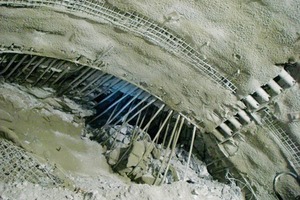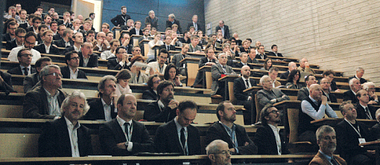Südbahn Conference 2008: Koralm Tunnel –Semmering Base Tunnel
The Südbahn represents an important rail link within Austria and at the same time is an element of the pan-European Corridor VI from the Baltic states leading to the north of Italy. Two of Europe’s largest tunnelling projects are being executed on this axis: the 32.8 km long Koralm Tunnel crosses under the range of mountains between Styria and Kärnten and the 27 km long Semmering Base Tunnel is to connect Lower Austria with Styria. The progress attained by both projects has been reported on at length.
The Geotechnik Graz Group staged the 2008 Südbahn Conference on the Koralm Tunnel and the Semmering Base Tunnel in conjunction with the Leoben Mining University, the ÖBB Infra-
struktur Bau AG and the Austrian National Committee of the International Tunnelling Association (ITA) on November 28th. It was held at the University of Graz and attended by more than 200 experts including some from neighbouring countries.
New Semmering Base Tunnel
In spring 2005 it was decided to create a uniform efficient rail route with the new Semmering Base Tunnel (nSBT) and the Koralm Tunnel for the entire Südbahn system. The Infrastruktur Bau AG of the Austrian Federal Railway (ÖBB) was commissioned to undertake the nSBT project. The contract for the project determines the transport political objective, the provision of financial means, collaboration and the time frame and also contains infrastructural basic parameters and the intention of making the best possible use of investments already made such as the pilot heading in Mürzzuschlag. Completion of the nSBT is to be geared to the Koralm railway coming into service [1].
Choice of Route
Altogether 13 routes – i.e. 4 tunnel routes – with the appropriate link-up possibilities in Styria were assessed in a route and station selection process. In this connection gradients rang-ed from 6.3 to 8.5 ‰ and the overall lengths of the tunnels between 24.8 and 30.6 km.
After obtaining expert advice and weighing everything up with regard to traffic and technology, space and environment as well as costs and risks the selection process with the announcement of the selected route – Pfaffensattel – was wound up in spring 2008. Advantages in its favour are minimal effects on...






